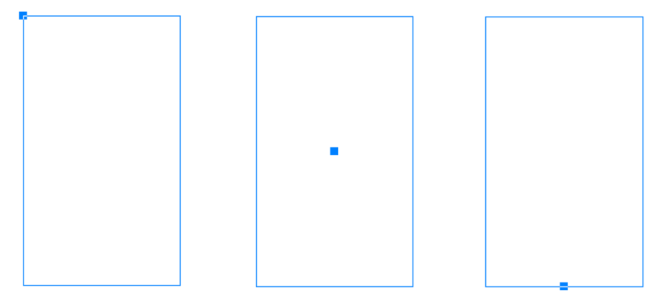Precision Design: An In-Depth Exploration of Drawing and Modifying Rectangles Using Object Coordinates in CorelDRAW

Introduction:
CorelDRAW, a powerful graphic design software, provides designers with a wide array of tools to create precise and visually appealing compositions. Among these tools, the ability to draw or modify rectangles using object coordinates stands out as a fundamental skill for achieving accuracy and consistency in design. This comprehensive guide aims to explore the intricacies of working with rectangles using object coordinates in CorelDRAW, catering to both beginners seeking foundational insights and experienced designers looking to refine their skills.
I. Understanding the Significance of Object Coordinates:
- Defining Object Coordinates: Object coordinates refer to the numerical values that define the position and dimensions of an object within the design workspace. Using object coordinates allows designers to specify exact locations and sizes, ensuring precision in design.
- The Importance of Precision: Precision is paramount in graphic design, especially when working on projects that require accurate layouts, alignments, or dimensions. Object coordinates provide a systematic and controlled approach to drawing and modifying design elements.
II. Basic Techniques for Drawing Rectangles Using Object Coordinates:
- Accessing the Rectangle Tool: Begin by selecting the Rectangle tool from the toolbox. This tool is often represented by a square icon and can be found in the left sidebar of the CorelDRAW workspace.
- Entering Object Coordinates: Once the Rectangle tool is selected, specify the object coordinates in the property bar or the options bar at the top of the workspace. Object coordinates typically include values for X (horizontal position), Y (vertical position), width, and height.
- Drawing the Rectangle: After entering the desired object coordinates, click and drag in the design workspace to draw the rectangle. The rectangle will be created with precise dimensions and positioned according to the specified coordinates.
III. Modifying Rectangles Using Object Coordinates:
- Selecting the Rectangle: To modify an existing rectangle, use the Pick tool to click on the rectangle, ensuring it becomes the active selection in the design workspace.
- Accessing the Object Coordinates: With the rectangle selected, navigate to the property bar or the options bar to view and edit the object coordinates. Modify the values for X, Y, width, or height as needed to achieve the desired changes.
- Applying Changes: After adjusting the object coordinates, the changes are applied by pressing Enter or clicking outside the property bar. The rectangle will be instantly updated based on the modified coordinates.
IV. Navigating the Object Manager for Rectangle Coordinates:
- Understanding the Object Manager: The Object Manager is a powerful organizational tool that displays the hierarchy of objects within the document. Use it to locate and select rectangles for precise modifications using object coordinates.
- Batch Editing with Object Manager: In scenarios where multiple rectangles need similar adjustments, use the Object Manager to select and modify multiple objects simultaneously. This ensures efficiency and consistency in design.
V. Advanced Techniques for Object Coordinates:
- Using Relative Coordinates: CorelDRAW allows designers to use relative coordinates, which are based on the current position of an object. This technique is valuable for creating patterns, grids, or symmetrical designs with interconnected rectangles.
- Coordinate Transformations: Explore coordinate transformations, such as scaling or rotating rectangles using specific coordinate values. This advanced technique provides designers with creative flexibility in shaping and arranging rectangles.
VI. Troubleshooting and Best Practices:
- Verifying Unit of Measurement: Before entering object coordinates, verify the unit of measurement (e.g., inches, millimeters, pixels) to ensure consistency in dimensioning. Use the options bar to switch between units if necessary.
- Undo/Redo Functionality: The Undo (Ctrl + Z) and Redo (Ctrl + Y) commands serve as a safety net for reverting actions. If unintended modifications occur, use these commands to navigate through the editing history.
VII. Collaboration and Object Coordinates:
- Sharing Design Specifications: When collaborating on design projects, share specific object coordinates with team members. This ensures that everyone is aligned on the precise dimensions and positions of design elements.
- Version Compatibility: When sharing designs, be mindful of version compatibility. Object coordinate features may vary between different versions of CorelDRAW, impacting the accuracy of transferred coordinates.
VIII. Documenting Design Processes:
- Creating Tutorials and Guides: Document the process of drawing or modifying rectangles using object coordinates for educational or collaborative purposes. Create tutorials, design process documents, or annotations within the design file to guide team members or for future reference.
- Maintaining Design Consistency: When working with object coordinates, ensure design consistency by adhering to a standardized approach. This includes using a consistent unit of measurement, alignment strategy, and precision standards across the entire project.
Conclusion:
In conclusion, the ability to draw or modify rectangles using object coordinates in CorelDRAW is a fundamental skill that contributes to precision, consistency, and efficiency in graphic design. As designers navigate through the step-by-step guide and explore advanced techniques, they gain a deeper understanding of the tools available for achieving accuracy in their designs. By incorporating troubleshooting tips, best practices, and collaborative strategies, designers can confidently wield the power of object coordinates in CorelDRAW, ensuring a streamlined and precise design workflow. Embrace the precision and control that object coordinates offer, and let your designs thrive with accuracy and visual harmony.




